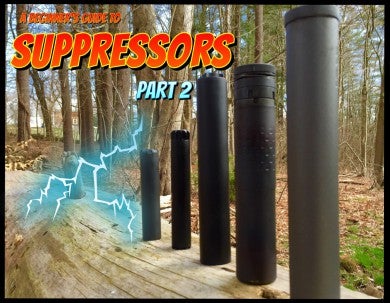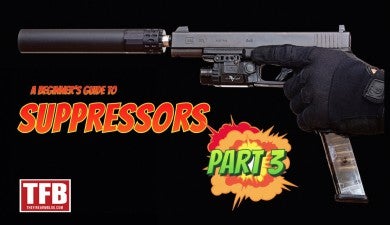We are living in a Golden Age of suppressors. The market is flush with caliber ratings, high-tech materials, new mounting options and a host of accessories. If you have ever thought about owning a suppressor, or even if you haven’t, let’s walk you through your first purchase from start to finish. Believe me, you want one. Ok, more than one.
There is a lot of information to cover, so we are going to break this whole process down into three easy parts:
Part 1
- Silencer Laws
- Types of Suppressors
- Which One is Right For You?
- Research and Reviews
Before we begin, what actually is a silencer?
Straight from the Bureau of Alcohol Tobacco and Firearms (BATFE) website:
The term “Firearm Silencer” or “Firearm Muffler” means any device for silencing, muffling, or diminishing the report of a portable firearm, including any combination of parts, designed or redesigned, and intended for the use in assembling or fabricating a firearm silencer or firearm muffler, any part intended only for use in such assembly or fabrication.
Clear as mud, right? In layman’s terms, a suppressor is a device mounted on the muzzle end of a gun’s barrel, or any part of that device, that is intended to make that gun quieter. The term, suppressor, silencer, muffler or “can” are all interchangeable.
And lastly before we get into the laws surrounding ownership, commercial suppressors are sold through Federal Firearm Licensees (FFL) that have paid their yearly Special Occupational Tax (SOT). Commonly referred to as “dealers”, “class III dealers” or “SOTs” (pronounced S-O-T), these companies sell and/or transfer silencers they receive from manufacturers or other dealers. More on the BATFE transfer process coming up in Part 2.
Silencer Laws
Here are the basic requirements to purchase a suppressor from a dealer:
- Be at least 21 years old
- Be a U.S. resident
- Be legally able to purchase and own a firearm
- Pay a $200 BATFE transfer tax (per item)
- Live in a state that allows civilian ownership of suppressors.
Let’s talk about that last point: If you don’t already know your state’s suppressor laws, your first stop should be the American Suppressor Association (ASA) or the National Rifle Association Institute for Legal Action (NRA-ILA). Even if your state is on the ‘silencers are legal’ list, it is your responsibility to also check your local laws for any additional restrictions.
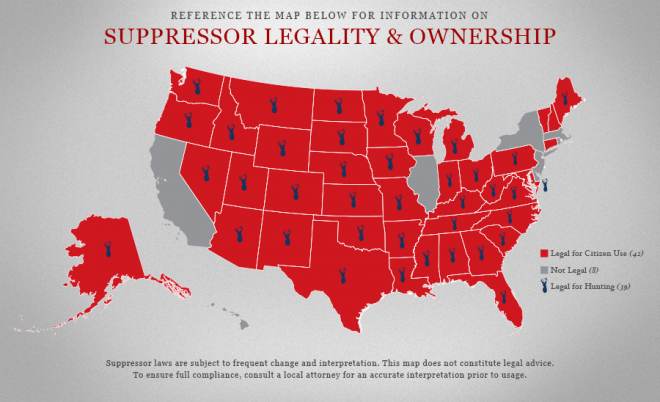
Credit: The American Suppressor Association
Didn’t make the list? Keep reading; Suppressor laws are evolving for the better every year. Last year both Minnesota and Vermont legalized suppressor ownership and at the time of this writing Iowa (Congrats Iowa!) and even Massachusetts, with all it’s challenging gun laws, are both advancing bills to legalize individual ownership of suppressors. There is also a push in Congress to remove silencers from the National Firearms Act (NFA) Registry – The Hearing Protection Act.
Final legal issue: The Chief Law Enforcement Officer (CLEO) sign off requirement. For 82 years, individuals who wanted to purchase NFA items like suppressors were required to get an approval from their local CLEO. In some locations, CLEOs would refuse to sign NFA transfer paperwork effectively banning ownership of suppressors and other registered items. However, with the adoption of a controversial BATFE rule change called 41F (formerly 41P), starting in early July of 2016, individuals will only be required to notify their CLEO of an NFA transfer – no approval required. Individuals (and now entities like corporations and trusts) still have to submit fingerprints and photographs and undergo a background check to have their BATFE forms approved. Don’t worry, we will simplify all of the paperwork in Part 2.
Types of Suppressors
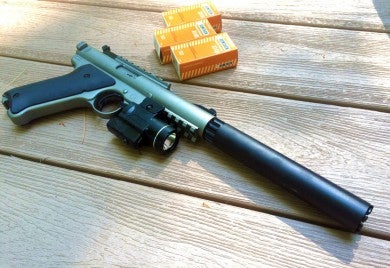
A Ruger MKII with a Pac-Lite threaded barrel and a SilencerCo Warlock 2. Gemtech makes suppressor-specific ammunition.
Great, you’re legal! It’s time to start the search for your new silencer.
First, let’s break suppressors down into five basic categories: Rimfire, Pistol, Rifle, Multi-Use and Shotgun.
Rimfire Suppressors ($200 to $450) – These smaller lighter cans are optimized for rimfire cartridges (although some can handle small rifle cartridges like the 5.7×28). This is the easiest way to get close to that ‘Hollywood quiet’ suppressed gun. Using the right ammunition, the loudest sound you’ll hear when using a rimfire silencer will be the bullet hitting the target. Because rimfire ammunition runs dirty, modern day rimfire cans are built to be taken apart for cleaning. Most rimfire suppressors attach directly to the barrel with a thread pattern of 1/2 x 28.
Examples: SilencerCo Spectre 22; Dead Air Mask.
Pistol Suppressors ($400 to $800) – Specifically engineered to handle the recoil operation of semiautomatic handguns, these suppressors use a spring operated Neilsen Device (or booster) to help cycle the action. Some of these silencers can handle subsonic rifle rounds and have the option of a fixed barrel mount rather than a booster for mounting to the barrel of a rifle. Important note: Never use a booster with a rimfire can.
Examples: Rugged Obsidian 45; Griffin Revolution
Rifle Suppressors ($500 to $1500) – Designed to handle the high pressures and temperatures of rifle rounds, these caliber specific cans come in direct thread and quick detach versions. Most of these suppressors are sealed, meaning that they can’t be taken apart for cleaning. It’s a good thing that rifle silencers rarely, if ever, need to be cleaned; the high energy from rifle rounds blasts out most of the carbon buildup.
Examples: Sig SRD762Ti-QD; AAC M4-2000
Multi-Use ($600 to $900) – These suppressors combine certain traits from each of the rimfire, pistol and rifle categories to provide the user with a ‘Swiss Army Knife’ of do-it-all silencers that can be moved between multiple hosts and configurations. This also can mean that these silencers may not excel in any one category, so choose wisely.
Examples: Liberty Mystic X; Griffin Optimus; SilencerCo Hybrid
Shotgun Suppressors ($1,200) – This is the most niche category on the list. There are few options out there but a shotgun suppressor is probably not a good recommendation first time buyers.
Example: SilencerCo Salvo12.
Each of the above categories can have their own subsets. For example rifle suppressors can be made to take a harsh firing schedule for combat use or be extremely lightweight for a bolt action hunting gun. And since this is a beginners guide, we will leave submachine gun, machine gun and integral (built into the firearm) suppressors for another time.
Which One is Right For You?
The key to picking the right silencer is to manage your expectations. Firearm suppressors reduce (not eliminate) noise, pressure and flash. “Forget what you see [and hear] in movies,” says Chris Hansohn from Hansohn Brothers, an online and retail suppressor dealer based in Virginia. And aside from rimfire and some subsonic ammunition, even when shooting suppressed, you will still need to wear some form of hearing protection. If you are looking for that awe-inspiring silencer experience, a rimfire can is probably your best bet, followed closely by a pistol or rifle can using subsonic ammunition. “Start with a rimfire silencer and a .22LR rifle as a host for the best dollar-to-smile ratio,” continued Chris from Hansohn Brothers. But, if you are dead set on suppressing your .338 Lapua first, just realize that it will still be loud.
“With a myriad of models, options, and probably most important – price ranges, most buyers can get overwhelmed,” says Mark Cook, owner of MAC Tactical an FFL/SOT dealer in New Hampshire. “My best advice to customers is to identify what your intended use is and what caliber(s) and hosts you want to suppress.”
When considering which guns to suppress, start with the one you shoot the most. Defensive pistol? Backyard plinker? Rifle hunter? Precision shooter? Common sense dictates that shooters should make their favorite guns the most pleasant to shoot. “You can effectively suppress 90% of all firearms with just 3 silencers. A magnum rated .30 caliber, a .45 pistol, and a magnum rated .22 silencer,” says Jake Hinton of Quiet Riot Firearms, an online and retail suppressor dealer based in Georgia. “Pick which of those three you shoot the most and start there.” Also, as one reader points out, because of the gap between the cylinder and the barrel, revolvers make terrible hosts, except for a few exceptions.
Research and Reviews
One of the hardest parts about buying a silencer is that it is difficult, if not impossible, to try them out before making a decision. And even if you do find a dealer that has demonstration cans that they allow customers to use (at their range), chances are that they will not allow you to test them on your hosts. This means that prospective buyers are left primarily with the Internet and word of mouth for silencer research, which can be difficult to interpret. Especially since consumer-grade audio and visual equipment cannot accurately capture the sound reduction felt by the shooter. [Be careful] listening to people’s opinions and taking that as the gospel on a specific silencer,” says Jeremy Mallette of Silencer Shop, an online suppressor distributor headquartered in Texas. “Even at Silencer Shop we have our favorites and if you ask five sales guys you’ll get five different answers.”
“It makes a dealer’s job a lot easier to suggest models if you have clearly defined goals,” – Chris Hansohn, Hansohn Brothers.
Many manufacturers, distributors and dealers will use professional audio equipment to measure decibel reductions. While this is a great way to compare the performance of different suppressors, it’s not the only variable to consider. “Don’t get to wrapped up in chasing the lowest decibel numbers. These days the manufacturers know that a third party [decibel] test is inevitable and they have nothing to hide. What you need to concentrate on is the tone,” says Adam Johnson, owner of the NFA Review Channel that conducts testing and evaluation of suppressors. “Tone will make or break your shooting experience.”
One of the best ways to interpret a suppressors tone is to find a friend who owns and shoots with silencers. And, if you don’t know a suppressor owner, internet discussion boards like AR15.com have active suppressor forums where the latest products and technologies are discussed. If you are interested in a specific brand, chances are there is someone out there that either loves or hates it. Just remember that it’s the internet; take everything you see, hear and read with a grain of salt. What works for one user, might not necessarily be the best choice for you.
Reviews on almost any of host and suppressor combination are on YouTube.
Obviously you want a suppressor that will reduce sound and muzzle blast, but there are other characteristics that are equally important, but much easier to quantify. Length, weight, materials, mounting system, barrel length, caliber restrictions and the manufacturers customer service history should be a part of your decision process. Again, it all comes back to what host you are trying to suppress and for what purpose. For example, selecting a silencer for a short barreled rifle (SBR) can be a completely different process from picking a silencer for a bolt action precision gun. “It makes a dealer’s job a lot easier to suggest models if you have clearly defined goals,” says Chris from Hansohn Brothers.
When you start looking at models, make sure you take into account your host. For rifles, barrel length is going to be a top concern since most manufacturers will list a minimum barrel length required for a specific caliber. And you are going to want to decide on a mounting option: it is usually a choice between direct thread and quick disconnect. Typically, direct thread silencers are left on one host most of the time while quick disconnect (QD) options allow the shooter to have multiple mounts (a brake or flash hider) on different guns and swap the suppressor between them. Some pistol hosts have unique thread patterns or don’t offer threaded barrel options. Another reason to do thorough research before you buy.
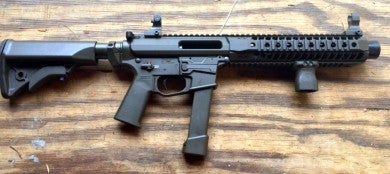
A SilencerCo Octane 45HD mounted under the hand guard of a QuarterCircle10 pistol caliber carbine, Length and width restrictions should be considered when pairing your host with a potential suppressor.
It is important to note, the market for used silencers is almost nonexistent, so consider every suppressor you buy a lifetime commitment. With that in mind, you wouldn’t buy a TV without pouring over specifications and features and making an informed decision, right? Doing similar research when buying your cans will save you headaches and regret. “Buy the best silencer you can afford, even if that means putting your purchase off until you can save more [money],” says Jake from Quiet Riot. “There is nothing worse than having an old ineffective silencer collecting dust in the back of your safe.”
Finally, start planning out how much you want to spend. Your budget should include the $200 transfer tax and possibly mounts, boosters and barrel threading.
With that, I’m going to wrap up Part 1 of this series with a little homework. Take the below list of silencer manufactures and start researching some options for your host(s). Take a look at the NFA Review Channel and other reviewers on YouTube and around the web. By the time Part 2 rolls around, you should be ready to buy. Remember your objectives and pick the right suppressor for you, not what the internet or your local gun shop decides to sell you.
Top suppressor manufacturers (in alphabetical order):
Advanced Armament Corporation – http://www.advanced-armament.com
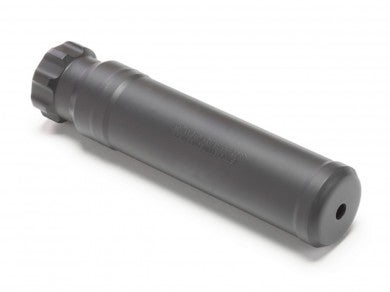
Allen Engineering – http://aesuppressors.com/suppressors/
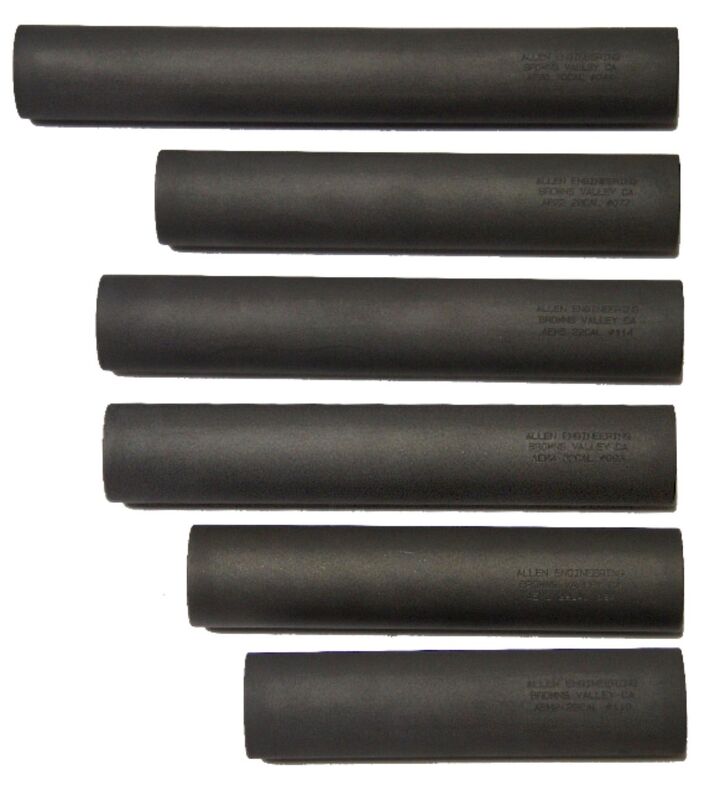
AWC Silencers – https://awcsilencers.com/
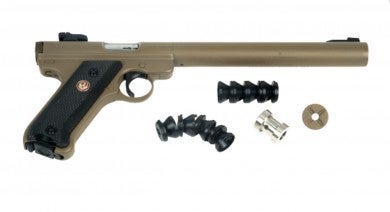
Bowers Group – http://www.bowersgroup.com
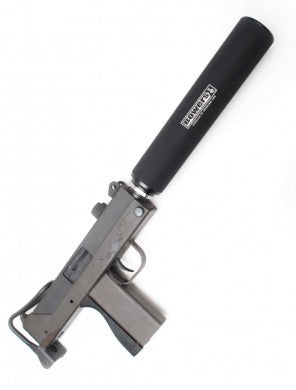
Dead Air Armament – http://deadairsilencers.com

Delta P Design – https://www.deltapdesign.com/suppressors.html
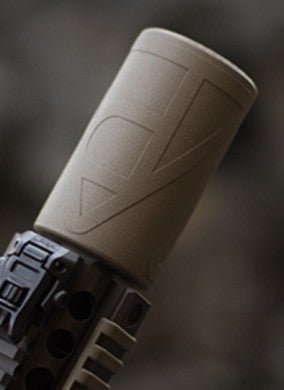
Gemtech – http://www.gem-tech.com
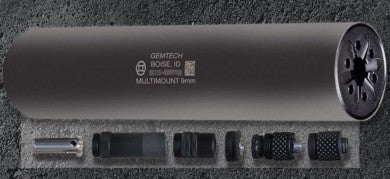
Griffin Armament – http://www.griffinarmament.com
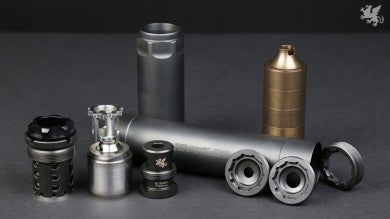
Innovative Arms – http://www.innovativearms.com

LaRue Tactical – http://www.larue.com/larue-tranquilo-sound-suppressor-m308
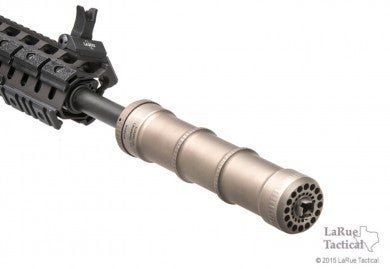
Liberty Suppressors – http://libertycans.net
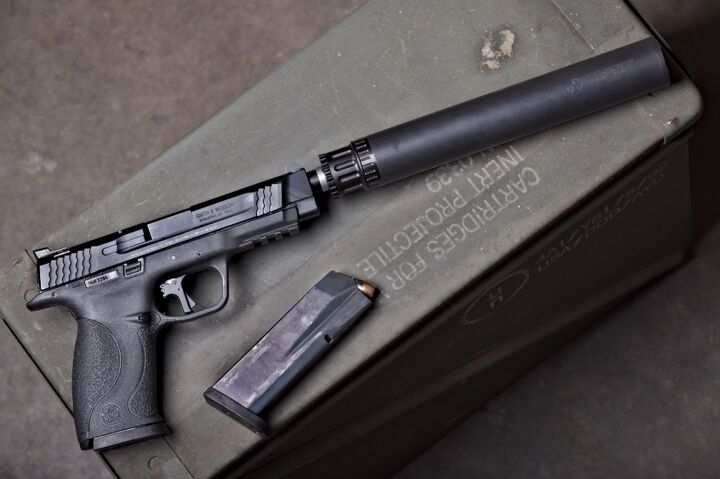
Mack Brothers – http://macbros.com/
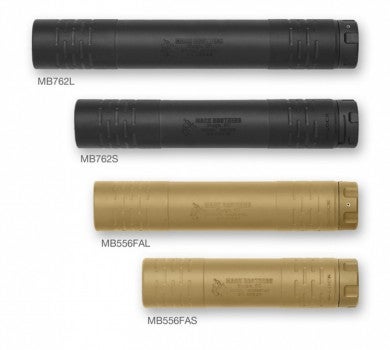
OSS Suppressors – http://osssuppressors.com/
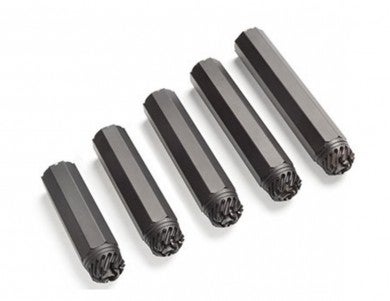
Ruger – http://ruger.com/micros/silent-sr/index.html

Rugged Suppressors – https://ruggedsuppressors.com
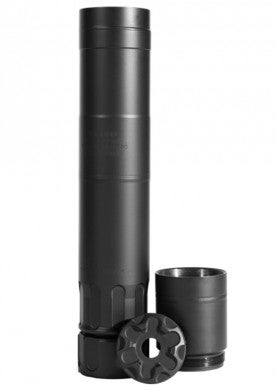
Sig Sauer – http://sigsilencers.com
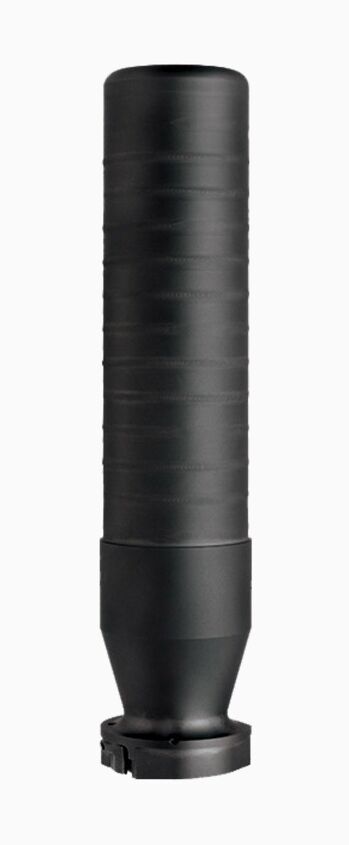
SilencerCo – https://silencerco.com
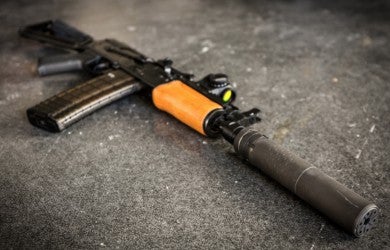
Surefire – http://www.surefire.com/tactical-equipment/sound-suppressors.html
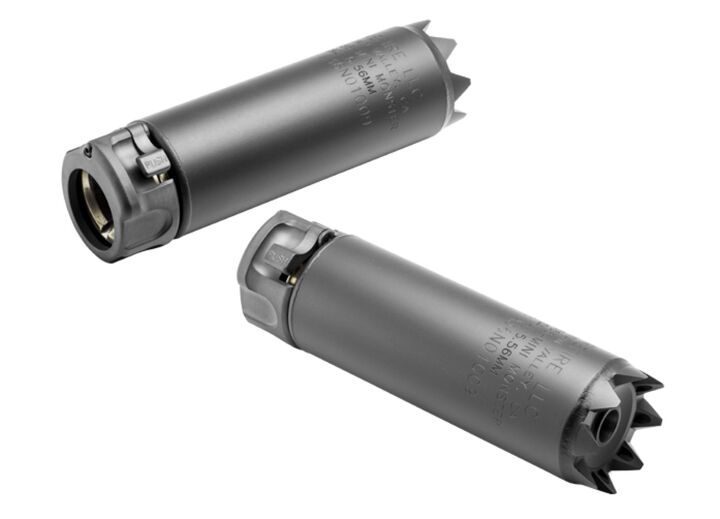
Tactical Solutions – http://www.tacticalsol.com/suppressors/
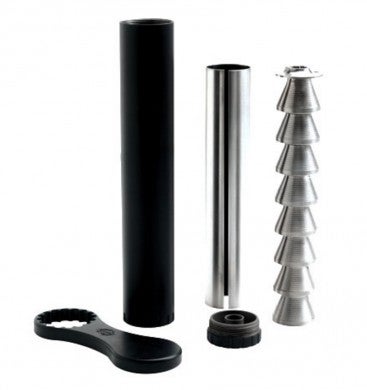
Thompson Machine – http://www.thompsonmachine.net/
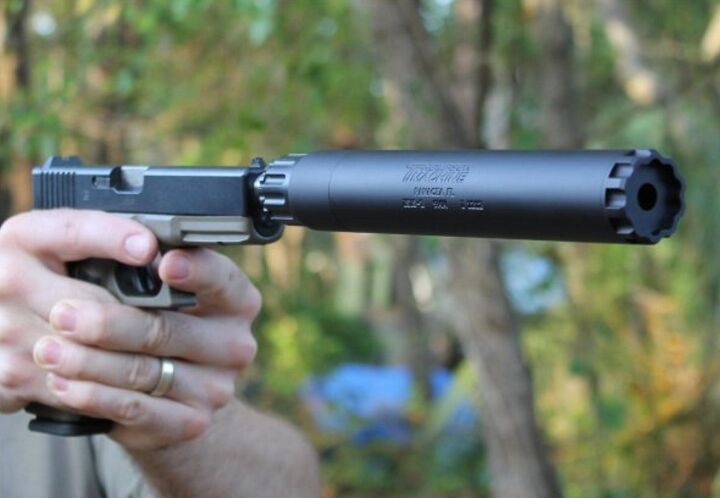
Thunder Beast Arms – https://thunderbeastarms.com
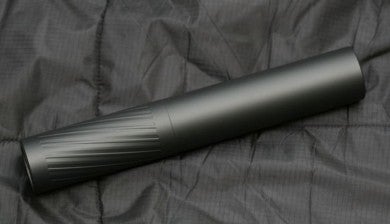
Yankee Hill Machine – http://yhm.net
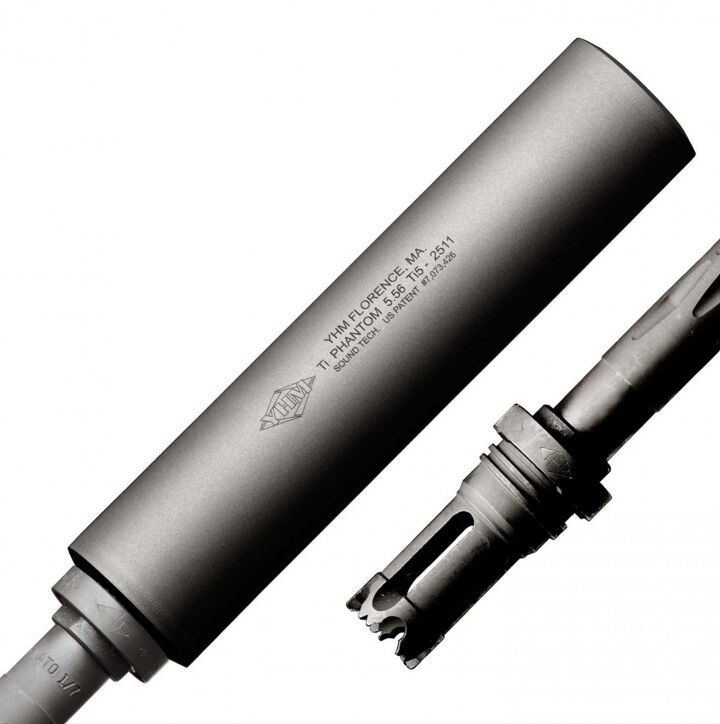
Writer’s note: I’m sure I left your favorite manufacturer off the list. If so, feel free to remind me in the comments section.
I’ll leave you with this bit of information from Jeremy at Silencer Shop:
I have yet to have a customer that has just bought one silencer.
Quick Review:
- Check your laws.
- Decide on which host(s) to suppress.
- Read/Watch/Discuss reviews online.
- Research manufacturers.
- Decide which suppressor is best for you and your goals.
See you for Part 2 of A Beginners Guide to Suppressors.
We are committed to finding, researching, and recommending the best products. We earn commissions from purchases you make using the retail links in our product reviews. Learn more about how this works.
 Your Privacy Choices
Your Privacy Choices

